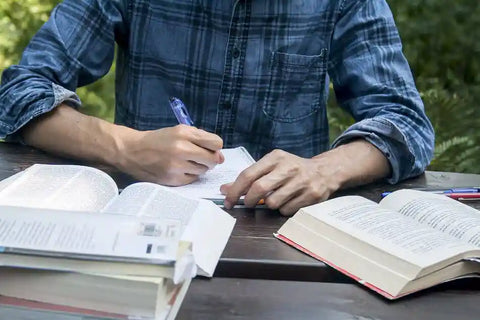Free Sample Letter and Advice for Drafting a Pre-Submission Inquiry
Submissions to respected academic and scientific journals are more numerous than ever, competition for available publication space grows stiffer each day and wait times between submission and response can be painfully long, especially if your manuscript is rejected at the end of the process. Little wonder that pre-submission inquiries have become more common in such a publishing climate. Pre-submission inquiries enable the author of a research paper to approach more than one journal simultaneously, which is usually not allowed when formally submitting an academic or scientific journal paper. In addition, for a pre-submission inquiry there is usually no need to format a manuscript in accordance with journal guidelines – indeed, usually no need to have the paper finished at all – which can save time and unnecessary work. Pre-submission can also save time by enabling journal proofreaders to offer quick answers and advice for authors (response times tend to range from a couple of days to a few weeks at most) whether they are encouraged to submit their work to the journal or not. Finally, the pre-submission process can be beneficial for authors simply because it demands a clear understanding and formal articulation of the nature and importance of their research while they are still developing or drafting a paper, and an expression of interest from a journal editor can certainly inspire engaged and efficient writing and revision practices.
However, it is important to recognise that a journal editor’s encouragement to submit a manuscript is not a guarantee that the article will be sent on for peer review or accepted for publication if you do decide to submit it. Similarly, an editor’s advice not to submit a manuscript does not mean that the paper will certainly be rejected, and a pre-submission inquiry will in most cases do an author no harm as long as the journal’s guidelines are consulted and followed. If a journal’s instructions for authors specifically indicate that pre-submission inquiries are not welcome, for instance, it is wise to skip the inquiry and move directly on to formal submission. If, on the other hand, the journal explicitly requests pre-submission inquiries, as is the case with some academic and scientific journals and particularly certain types of manuscripts such as review articles and methods papers, it would be foolish not to send one along. When inquiries are required, scholarly journals tend to provide details about the information they need to assess the suitability of the research, and some even offer online forms for facilitating inquiries, so the goal is to provide exactly what the journal requests in precisely the manner indicated in order to make the pre-submission inquiry productive.
Unfortunately, the websites and author instructions of many journals will reveal very little or nothing at all about policies and preferences associated with pre-submission inquiries, leaving authors uncertain about not only what they should include in an inquiry, but also whether they should send one at all. As a general rule, if you read the journal, are sure that your paper fits its publishing scope and aims, and have no special need for hasty publication or any complicated circumstances to negotiate, a pre-submission inquiry is unnecessary and a formal submission will probably be more appropriate. On the other hand, if you think the journal’s proofreaders and readers may be interested in your research, but no other content quite like it has been published by the journal in recent years, writing to determine whether the interest you anticipate really does exist may be a better initial approach than formally submitting the paper. The same is the case if the research is so time-sensitive that priority review would be required or if part of the manuscript or research data has been released or published elsewhere. Every paper is unique and deciding whether a pre-submission inquiry or formal submission is the best approach for a particular journal might require serious consideration of the pros and cons.
Deciding what to include in a pre-submission inquiry can be as challenging as deciding whether to send one or not. If all journals that specified exactly what was wanted in an inquiry asked for exactly the same material, determining the right content would be a good deal easier, but they do not. Some request a large amount of detail, specific information on the authors, disclosures of various kinds, a lengthy summary or abstract and even the full text of the paper, whereas brevity is favoured by others who ask for no more than a simple email message with an abstract pasted right into the message. General advice on content varies as much as journal guidelines do, so striking the perfect balance between providing the specific information required for constructive feedback and yet respecting how busy journal proofreaders are by keeping your language clear and concise and your inquiry brief is no easy matter. It is necessary, however, as is ensuring that your grammar, spelling and punctuation are correct and effective. If you receive a negative reply to your pre-submission inquiry, that response should be the result of an imperfect fit for the journal, not of a poorly conceived and badly written inquiry. The following list of contents for a pre-submission inquiry to a scholarly journal covers the basics and includes what will be the most essential information about a manuscript for most academic and scientific journals.
What To Include in a Pre-Submission Inquiry
• Begin by formally addressing the editor by name, if possible, and stating that you are writing to request feedback on the suitability of your research and manuscript for the journal. Use the title of your paper (or the working title if the paper is not finished) and the name of the journal. Author names might also be included if you have co-authors, and it can be useful to mention exactly what you are sending with your inquiry, especially if you are attaching any files to the message.
• Explain that you think your research paper will be of interest to the journal’s readers and provide some detail about exactly why. Specific information about the problem you investigated, your objectives, the methodology you used and the results you obtained should be offered, but not at exhaustive length or in language too heavily laden with jargon and discipline-specific terminology. You will need to emphasise your most important and persuasive evidence and conclusions in relation to the journal’s publishing aims and scope. Suggesting how your work is connected to current debates or a development of research already published by the journal is often a good idea as well. If the inquiry is about another type of paper, such as a review article, the focus will be somewhat different: you would want, for instance, to outline the type and range of the review and perhaps suggest why you are especially well qualified to discuss and assess the literature on the subject or in the research area.
• Highlight the novel and innovative aspects of the research presented in the manuscript you hope to submit, and be sure to give enough specific detail to indicate the precise nature of the advances you have made. Outlining what has already been published on the subject by you as well as other researchers will clarify your contributions and the new insights they offer, and explaining exactly why and how those advances and their implications will be of special interest and use to the researchers who read the journal will make a persuasive argument for your manuscript’s suitability for the publication. Be sure to clarify your innovations particularly in relation to the journal’s previous publications in the area by explaining how your research approach differs, for example, from one reported in the journal two years before or your review article covers entirely new ground.
• Reveal anything important about the history of the manuscript. If, for instance, it has already been submitted elsewhere and rejected, it is best to be honest about this, and any review or editorial comments you received might be introduced. You could explain how you have addressed that criticism with revisions and improvements or, on the contrary, why you have not, but do be prepared for the possibility that the editor may agree with a peer reviewer even though you do not. Earlier releases or publications of parts of the manuscript or the research material in it should be explained, so if you have given a presentation on the research or used some of the data for another publication, let the editor know.
• Mention any special circumstances associated with the research or manuscript. If, for example, the research is particularly time-sensitive and really must be published as quickly as possible, it is vital to say so because such work often requires priority review and thus some careful forethought and planning by the journal editor. Complicated or abundant visual aids or supplementary materials might also be mentioned, especially if they exceed or otherwise lie beyond the journal’s guidelines or requirements for these elements. Such circumstances can justify why you are sending a pre-submission inquiry, but only if you clarify exactly why your work is time-sensitive or all those extra colour images are necessary.
• Sign off formally by thanking the editor for his or her time. Do offer to answer any questions the editor might have or provide any additional information that might be needed to make a decision. You could also ask the editor to suggest alternate publishing venues in the event that the paper is not suitable for the journal. Finally, finish with your name (as the corresponding author if you have co-authors) and your institutional affiliation.
• Paste the title (or working title) of your manuscript and a descriptive abstract under your message unless the journal instructions indicate that the abstract should be attached as a separate file. In some cases this abstract might be exactly like the abstract for the finished paper, but often it is longer and more detailed, including elements such as important citations and careful descriptions of innovative procedures to enable the editor to assess the work without actually seeing the manuscript. Be sure to add or attach any other information or files the instructions specify as necessary: these might include a clinical trial registration number, author disclosure statements, an outline of the paper, key tables or images and the entire manuscript in a draft or finished version.
Sample Letter for a Pre-Submission Inquiry
The following letter is entirely fictional and the research and researchers it describes imaginary, but it posits a realistic publishing situation and demonstrates how a number of the separate elements in the list above can be used in unique ways to construct a professional and engaging pre-submission inquiry. The complete contact information at the top is not usually necessary for an email inquiry, but I include it as an example of how a formal or professional letter might look.
Dr I. C. Script
Centre for Medieval Studies
University of the Northeast
188 Research Road
York, North Yorkshire, UK, YO10 2SS
01904 664422
icscript1@northeast.ac.uk
Dr I. M. Interested
Managing Editor
Medieval Manuscripts and Their Owners
169A West Central Avenue
London, UK, EC9M 6BC
managingeditor@MMTHjournal.co.uk
14 May 2018
Dear Dr Interested,
I am writing to inquire whether my paper entitled ‘Annotating Ownership: Marginalia in the London Manuscript of Abelard’s Love Letters’ is suitable for Medieval Manuscripts and Their Owners. I believe that the discoveries I have made through examining the fourteenth-century marginal annotations of the London Manuscript (Imaginary MS 667788) will interest your readers and I hope that you will think so too. I have included a detailed abstract of the contents of my paper after my message here, and beneath it you will find a transcription and translation of one of the longer annotations. I have also attached a photograph of this annotation as it appears on folio 8r in the manuscript, but let me explain why.
Although the London Manuscript of Abelard’s Love Letters has been largely neglected due to its late and imperfect text, it is the most fascinating of the extant medieval copies for the richness of its Latin marginalia. These annotations have not been studied, however, until now. My recent research has revealed that they are the work of an engaged reader who owned (or at the very least repeatedly read) and commented on the manuscript in the years between 1349, the earliest date cited in the manuscript, and 1362, when the annotator implies that the book will be passing to a new reader. The content of the annotations is fascinating for its emotional responses to the Love Letters, its mention of current events and its use of the personal names of people associated with the annotator. In the image I have sent, for instance, the annotator discusses his ‘beloved wife Kit’ and their ‘toft’ on the ‘high street.’ Annotations of this kind are unparalleled in the surviving manuscripts of Abelard’s Love Letters, and this is precisely the kind of original research material that Medieval Manuscripts and Their Owners aims to publish, but there is a hitch.
Unfortunately, no last names or specific locations are ever given by the annotator, the events mentioned in the marginalia took place in a number of different places throughout England and the provenance of the manuscript remains a mystery. There are hints that certain areas are more important to the annotator than others, and I discuss these in my paper, but I have not yet been able to identify exactly who the annotator was. I recognise that Medieval Manuscripts and Their Owners prefers to publish papers that identify and name particular manuscript owners, but this situation is rather complicated. You see, I have been able to determine with certainty that the annotator was not just a reader, but the manuscript’s owner; however, I could only do this via the annotations in the London Miscellany (Imaginary MS 223344) that is discussed at length in ‘Some Fourteenth-Century Miscellanies and Their Owners’ published by Professor U. Tooquick in the October 2016 issue of Medieval Manuscripts and Their Owners.
The Latin poems in this London Miscellany were also heavily annotated in the fourteenth century, and I have now determined that the annotator of that manuscript is also the annotator of Abelard’s Love Letters in the London Manuscript. I examine the palaeographical evidence for this in my paper, but a quick look at the annotation in the attached photo alongside the Miscellany annotation in Figure 3 (folio 78v) on p.244 of Professor Tooquick’s article will highlight the similarities. The content of both annotations supports this conclusion as well. In each the annotator refers to his ‘beloved wife Kit,’ and the ‘toft’ on folio 8r of the Love Letters reappears on folio 83r of the Miscellany. Furthermore, a list of five books that the annotator claims to have had made for himself and his family is tucked into a corner of the last folio of the Miscellany, and the ‘old love letters’ appear there along with the Miscellany itself, a Psalter, a Book of Hours and what the annotator calls ‘a little book of English romances.’
It might seem, then, that the question of who owned the London Manuscript of the Love Letters is solved given that Professor Tooquick argued persuasively for Earl William of Highcastle Heights as the owner and annotator of the Miscellany. However, Professor Tooquick and I have now had several discussions and, with the new evidence in hand, we are in agreement that Earl William could not have been the annotator and owner of these manuscripts. The Latin proficiency of the annotator and the number of books he claims to have owned convinced Professor Tooquick that Earl William, who had a house in London as well as his family estate, a wife named Catherine and a reputation for reading romances, was the likely owner. The argument against this conclusion, along with suggestions and conjectures about who might have been the owner/annotator of both manuscripts, is also presented in my paper, which Professor Tooquick has read. He it was, in fact, who suggested I contact you to inquire about your journal’s possible interest in my research.
Professor Tooquick and I have now decided to collaborate on this problem, so we will be examining both manuscripts in more depth and working to identify their place of production via script, illustration (what little there is of it) and binding. Ideally, we would also be able to discover the other three manuscripts mentioned by the annotator, especially that ‘little book of English romances,’ in the hope that their contents will provide further evidence of this fascinating fourteenth-century book owner and his annotating activities. Although more specific information on his identity may therefore be forthcoming over the next couple of years, exactly who owned the London Manuscript of Abelard’s Love Letters remains uncertain at present, but I do hope the uncertainty will not prevent you from considering my paper for publication in Medieval Manuscripts and Their Owners.
Many thanks for your time and consideration. I look forward to hearing your thoughts and would be happy to send along the paper itself or any other information that might be helpful.
Best regards,
Ian Script
Ian Script
Associate Professor
Centre for Medieval Studies
University of the Northeast
Why Our Editing and Proofreading Services?
At Proof-Reading-Service.com we offer the highest quality journal article editing, dissertation proofreading and online proofreading services via our large and extremely dedicated team of academic and scientific professionals. All of our proofreaders are native speakers of English who have earned their own postgraduate degrees, and their areas of specialisation cover such a wide range of disciplines that we are able to help our international clientele with research editing to improve and perfect all kinds of academic manuscripts for successful publication. Many of the carefully trained members of our manuscript editing and proofreading team work predominantly on articles intended for publication in scholarly journals, applying painstaking journal editing standards to ensure that the references and formatting used in each paper are in conformity with the journal’s instructions for authors and to correct any grammar, spelling, punctuation or simple typing errors. In this way, we enable our clients to report their research in the clear and accurate ways required to impress acquisitions proofreaders and achieve publication.
Our scientific proofreading services for the authors of a wide variety of scientific journal papers are especially popular, but we also offer manuscript proofreading services and have the experience and expertise to proofread and edit manuscripts in all scholarly disciplines, as well as beyond them. We have team members who specialise in medical proofreading services, and some of our experts dedicate their time exclusively to dissertation proofreading and manuscript proofreading, offering academics the opportunity to improve their use of formatting and language through the most exacting PhD thesis editing and journal article proofreading practices. Whether you are preparing a conference paper for presentation, polishing a progress report to share with colleagues, or facing the daunting task of editing and perfecting any kind of scholarly document for publication, a qualified member of our professional team can provide invaluable assistance and give you greater confidence in your written work.
If you are in the process of preparing an article for an academic or scientific journal, or planning one for the near future, you may well be interested in a new book, Guide to Journal Publication, which is available on our Tips and Advice on Publishing Research in Journals website.








